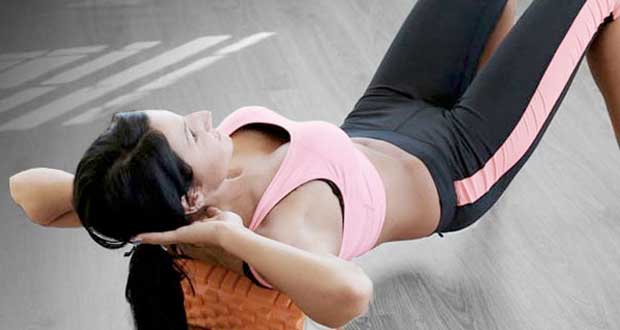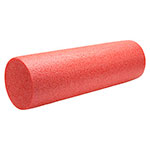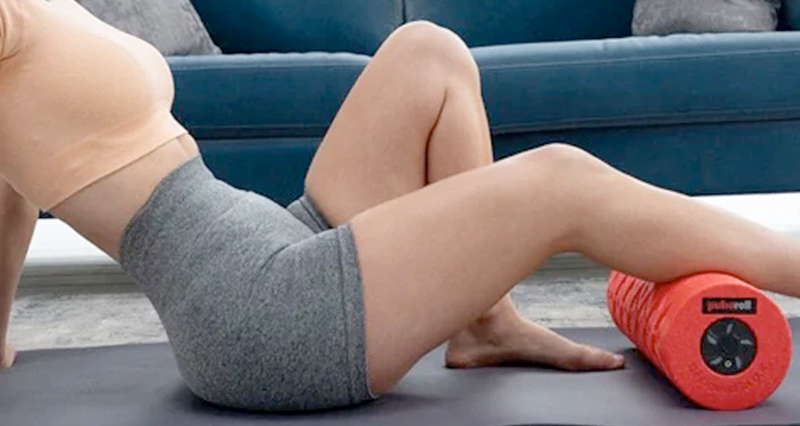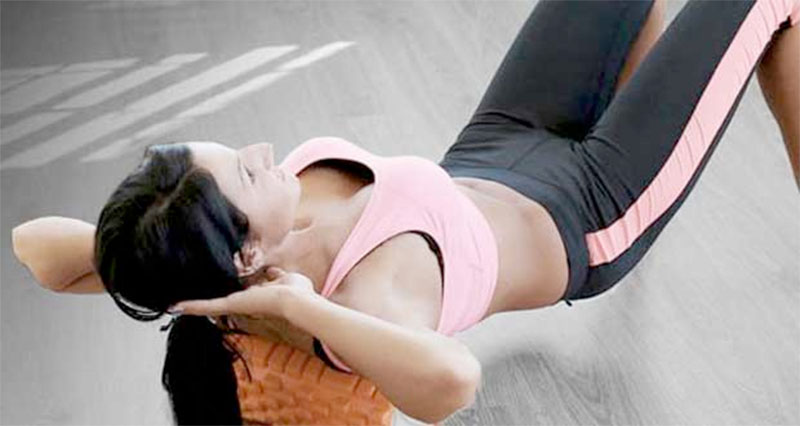
If you are not sure whether or not to buy a foam roller then read on! Here we explain all you need to know.
In an ideal world, expert sports or deep tissue massage would always follow an intensive workout. However, for the average amateur sportsman or woman, a personal masseuse isn’t a viable reality. Although, previously the preserve of sports therapists, foam rollers are now very popular within the sports and fitness community.
It is a simple, economical piece of kit that is portable, easily accessible, and highly beneficial. Whilst stretching, heat therapy, and saunas all help to negate muscle aches and strains, a roller helps optimise post-exercise recovery. As a result, enhance your performance.
What is a foam roller?
A foam roller is a cylindrical section of firm foam. However, the specific material used impacts product density and firmness. How to choose between the different products available on the market is explained in greater detail below.
Foam rolling
Foam rolling is widely used by athletes and therapists to target the muscle fascia. The fascia is the band of protective tissue fibres which serves to stabilise, enclose and separate muscles, tendons and ligaments. If the fascia functions poorly then it affects your performance.
For instance, tension and dehydration of the fascia cause a faster onset of fatigue during physical exertion. It may also affect movement control negatively.
How does a foam roller work?
They use resistance from body weight to target overactive muscles and tendons in the body. The applied resistance effectively massages the body, releasing muscle tension and tightness.
By using your own body weight to apply pressure where needed, the foam roller targets muscle discomfort, adhesions, and tension. Consequently aiding muscle recovery after exercise.
Myofascial release
Foam roller exercises are excellent for myofascial release. Myofascial release is a massage technique involving sustained pressure. Physiotherapists and massage therapists use it to release muscular tension, ease discomfort and improve general mobility and bodily alignment.
The action of using a foam roller on yourself is a self-myofascial release technique (SMR). Essentially a highly effective portable DIY massage.
In general day-to-day use, foam rollers are great for releasing muscle tension in the back. In particular, caused by repetitive movement or stasis (e.g working at a computer.) Athletes who are prone to over-active muscle discomfort particularly benefit from using a foam roller.
How do I choose the right foam roller for my needs?
As a commonly available product on the fitness marketplace, foam rollers are available for purchase in a variety of different materials, surface textures, and sizes. Choosing between these options will allow the optimum efficiency of the product to meet your needs. The various options available can be confusing for a first-time user, so we explain the differences in more detail below.
What size do I need?
The standard foam roller tends to be 6 inches in diameter and 12 inches in length, however, a longer length would be recommended if you intend to target the muscles in your back. Rollers up to a length of 36 inches are available, and best intended for use on the upper back and shoulders.
The shorter lengths are ideal for the targeted use of the leg muscles and hip flexors. In essence, the larger the body surface you wish to target, the longer the foam roller is required.
Foam roller materials
There are 7 different main materials currently widely offered by retailers, listed in order of density – from standard to extra-firm – below:
- PE (polyethene) – Standard density
- EVA (ethylene vinyl acetate)
- Duplex (high-density EVA)
- EPP (expanded polypropylene)
- FTR (EVA-PVC mix)
- TPT (EVA-PVC mix)
- Rumble Roller (EVA-polyolefin mix) – Extra-firm
Generally, the requirement for firmness and density is higher in relation to the intensity of your sports, training or workout and the intended intensity of foam roller use. Furthermore, those prone to fascial discomfort will benefit more from a higher-density product.
The higher-density materials also increase the durability of the product, so if you are purchasing for a gym, or sports team, or intend the product to be shared, opting for higher durability will add longevity to your investment.
Foam roller surface textures
Foam rollers are also available in different surface textures. Generally, the surfaces available are:
- Smooth
- Textured
- Duplex
- Bumped
- Finger-tip
Duplex and bumped surface designs have additional ridges to target areas of muscle that smooth surface rollers cannot access. This option is particularly effective at targeting trigger points, and for a more intense self-myofascial release technique.
The ‘finger-tip’ surface aims to mimic the fingers of a massage therapist, in that trigger points are identified by the ridge, and the smooth surface allows the gentle stretching and release of soft tissue. For those without particularly strenuous workouts or muscular tension, a smooth surface will be effective.
Foam rollers are an excellent piece of affordable kit to assist muscle recovery and tension relief. The benefits of applying self-myofascial release massage include enhanced muscle recovery and a swifter recovery period, which in turn can enhance overall athletic performance.


